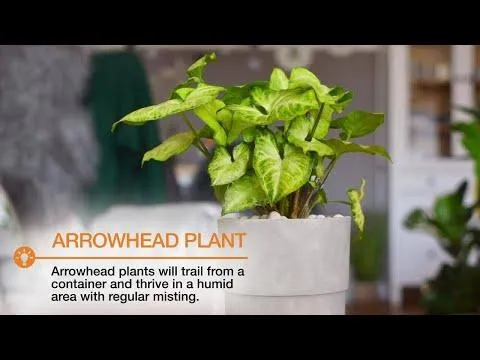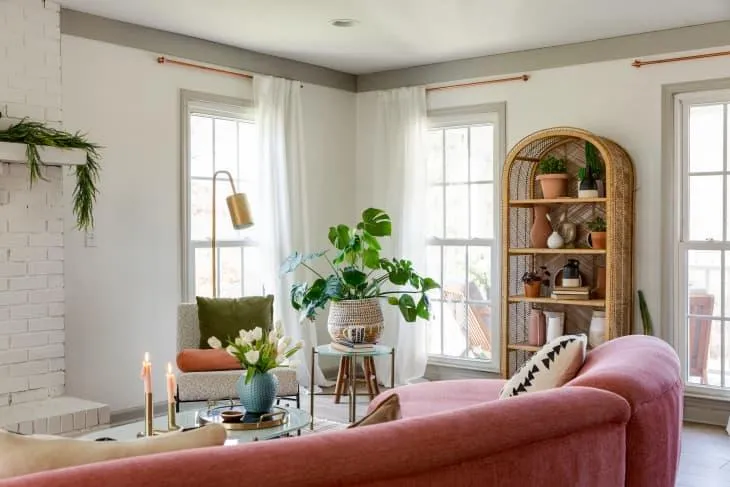A Guide to the Best Indoor Trees for Your Home
Whether you don’t have outdoor space or simply want to bring the feeling of nature inside, indoor trees can add life and visual interest to any room. From my experience living in small apartments over the years, plants have a way of lifting the soul. Here are some of the top tree varieties suited for indoor growth, along with tips on caring for them.
Ficus Tree
The ficus tree is one of the best options for indoor use. Its tolerance for low light makes it versatile—I’ve seen robust ficus trees thriving in sunless corners. Varieties like the rubber plant tree (Ficus elastica) form upright trunks with shiny leaves. You’ll find them in all sizes from tabletop specimens to 10-foot tall trees. Care is simple—water when the topsoil drys out but avoid overwatering. These trees can live for decades with minimal fuss.
Dwarf Umbrella Tree
The dwarf umbrella tree (Schefflera actinophylla) has graceful arched branches resembling an open umbrella. Its dark green leaves have a luxurious texture. Growing only 3-6 feet tall, it’s perfect for smaller spaces. I keep one in my bedroom for an instant zen vibe. These trees handle lower light well and bloom tiny white flowers. Water whenever the soil becomes dry to the touch. Pinch back new growth tips to maintain a dense, bushy shape.
Chinese Evergreens
Chinese evergreens (Aglaonema) come in an array of beautiful leaf patterns like variegated, white, and dark purple foliage. They thrive in shade and create a lush jungle feel indoors. I gifted an Aglaonema Maria to a friend recently and it’s blown her away with its hot pink leaves. Care is simple—water when dry and wipe leaves occasionally. Their versatility makes Chinese evergreens great starter plants for new plant parents.
Jade Plant
The jade plant (Crassula ovata) is tough as nails. Basically indestructible, they can go months between waterings. No wonder they’re considered a good beginner plant. Enjoy smooth green or variegated leaves on thick woody stems. Jade plants love sunlight and can grow quite large over time. Mine has gone from a tiny sprout to a 3-foot tree indoors! Just water them heavily whenever the soil dries out.
Weeping Fig
Weeping figs (Ficus benjamina) form cascades of narrow green leaves creating a willowy effect. Their branches arch gracefully, perfect for hanging baskets. I installed hanging pots of weeping figs in my living room for flow and variety in height. These trees handle low light well and have survived some minor neglect. But they do prefer humidity, so mist leaves occasionally or place on pebble trays.

So in summary, the top trees are ficus, Chinese evergreen, dwarf umbrella tree, jade plant and weeping fig. But there are many other great options too. Here are answers to some additional questions indoor tree lovers often have:
How to Care for Indoor Trees
Proper care keeps your indoor trees thriving for years. The basics include:
- Water when the top 1-2 inches of soil is dry. Use your finger to check soil moisture. Overwatering causes root rot.
- Fertilize during the growing season in spring and summer. Look for balanced houseplant fertilizer and follow label instructions.
- Provide adequate light. Trees need medium to bright indirect light without direct sun scorching leaves.
- Monitor for pests. Check regularly for signs of insects and treat promptly if needed.
- Dust leaves occasionally. Use a soft cloth or duster to remove dust buildup.
- Repot into a slightly larger pot as roots fill the container. But avoid too-large pots which hold excess moisture.
- Prune to maintain shape and remove dead or diseased growth.
Best Rooms for Different Tree Varieties
Placement depends on the tree’s light needs. Bright indirect light rooms like southeast-facing windows suit most varieties. Low-light options work well in living rooms, bedrooms, and offices.
- West or east-facing windows: Ficus, Chinese evergreen, umbrella tree
- North-facing windows: Weeping fig, snake plant, jade, peace lily
- Shaded interiors: Cast iron plant, spider plant, pothos
But from experience, trees can often adapt—I’ve seen ficus trees survive in deep shade for months. Experiment to see what thrives in your home.
Dealing with Pests
Unfortunately, houseplants aren’t pest-proof no matter how diligent your care. The most common offenders include:
- Spider mites: Fine webbing on leaves; tiny white dots. Wipe down with insecticidal soap.
- Mealybugs: Fluffy white dots. Dab with rubbing alcohol on a cotton ball.
- Scale: Hard shelters on stems. Scrape off and treat with horticultural oil.
- Fungus gnats: Tiny flies near moist soil. Let soil dry fully between waterings.
Prevention is key—don’t overwater and clean up fallen leaves/debris. Rotate pesticides if problems persist. Consider treating surrounding plants too as pests can spread.

Dealing with Browning Leaf Tips
Browning at leaf ends often signals one of a few issues:
- Overwatering: Let soil dry more between watering to avoid root rot.
- Underwatering: Water when topsoil looks dry to avoid moisture stress.
- Dry air: Mist leaves and boost humidity near heating vents.
- Mineral buildup: Flush pot with water and use distilled water for sensitive trees like ficus.
- Nutrient deficiency: Fertilize regularly during growing seasons.
With some diagnosis, you can prevent further browning and get healthy new growth. Don’t prune off browning yet—wait for the whole leaf to die back first.
Stunning DIY Projects
Indoor trees not only beautify rooms—they inspire creativity! Here are a few ideas:
- Hanging pot displays: Suspend pots of weeping figs, English ivy for nature art.
- Tall standards: Train ficus, fichus into sculptural trees in planters or towers.
- Terrariums: Create sealed landscapes combining trees, moss and minerals.
- Bonsai styling: Shape dwarf jades, ficus into miniature tree forms over time.
- Tabletop gardens: Arrange assorted small trees in a tray for your WFH space.
You can find pots, poles and supplies at craft stores to transform your trees. I may give the bonsai or terrarium styles a try myself next. How creative could you get?
So in summary, trees like ficus, Chinese evergreen and umbrella tree are beloved indoor plants for their beauty, longevity, and adaptability to typical home conditions. With proper care, they’ll provide natural ambiance for many years. Feel free to experiment to discover your favorites.
I hope this guide offers helpful insights to thriving indoor tree growing. Let me know if you have any other questions!

Indoor Tree Care Guide
| Tree | Growth Rate | Water Needs | Light Needs | Care Level |
|---|---|---|---|---|
| Chinese Evergreen | Slow | Moderate | Low Light | Easy |
| Peace Lily | Moderate | High | Low Light | Easy |
| Rubber Plant | Moderate | Moderate | Low-Medium Light | Easy |
| Palm Tree | Moderate-Fast | Moderate | Bright Light | Moderate |
| Bonsai Tree | Slow | Moderate | Bright Light | Difficult |
| Boston Fern | Moderate | Moderate | Low-Medium Light | Easy |
FAQ
-
What type of indoor trees are easy to care for?
Probably the simplest tree to keep inside is something like a peace lily. They basically don’t need much sunlight or water to survive. Just give them a drink when the soil feels dry. So in summary, peace lilies are kind of a foolproof plant.
-
How often should indoor trees be watered?
It depends on the tree variety, but as a general rule, most indoor trees should be watered around once every 7-10 days. However, you’ll want to check the soil before watering – if the top inch is dry, it’s time to give it a drink. The soil shouldn’t be soaked all the time. At the same time, letting it dry out totally is also no good for the tree. So you gotta strike a balance, right?
-
What is the best location in the home for indoor trees?
Typically, indoor trees like partial sun locations. So an east or west-facing window is ideal to provide bright light for at least part of the day. Nevertheless, some tree varieties can tolerate very low light if that’s all you have. You might need to water a low-light tree even less. So in the end, you’ve got options depending on your space.
-
Do indoor trees need fertilizer?
It appears that most indoor trees only need to be fertilized during their main growing season, which happens to be spring and summer. You can purchase specific houseplant fertilizer that you mix with water. But perhaps go easy on the fertilizer – too much can potentially burn the roots. In any case, be sure to follow directions on the package. Does that help explain indoor tree fertilizing?
-
What pests are common on indoor trees?
One tricky critter that indoor trees often face is scale insects. They kind of look like tiny shells stuck to leaves and twigs. If left untreated, they will suck sap from the tree and weaken it. Thankfully, scale is manageable with ingredients like rubbing alcohol applied with a cotton ball. You just gotta keep an eye out, right? Catching pests early makes treatment way easier.
-
How can I encourage new growth on an indoor tree?
To spur fresh leaves and branches, make sure your tree is getting adequate sunlight. Strong sunlight seems to stimulate growth. You can also try fertilizing during the growing season. However, overfertilizing can do more harm than good. Another thought is giving the tree a trim now and then to maintain its shape – apparently pruning encourages new buds. Hopefully these tips help – let me know if you have any other tree questions!

-
What signs indicate an indoor tree needs help?
If a tree suddenly seems to be struggling or slowly declining, pay attention to signs like leaves yellowing or dropping prematurely. Weakened branches that can’t support their own weight are also no good. I guess the trunk or soil appearing mushy and soggy might suggest overwatering issues too. Basically, a tree should look green and perky. If it looks kind of sad for no reason, that suggests it’s maybe not happy. Don’t wait too long to address problems – catching them early makes treatment way simpler.
-
How do I prevent indoor trees from becoming too large?
One approach is choosing a tree species that naturally stays compact. Topping the list here would be something called a bonsai tree – it’s specifically trained to be tiny. You can also look for dwarf or miniature varieties of larger tree types. Beyond that, regular pruning and repotting into a somewhat small container helps confine growth. Limiting fertilizer and placement in low-light spots might slow a tree gaining size too. With the right care, you can basically keep a tree small forever!
